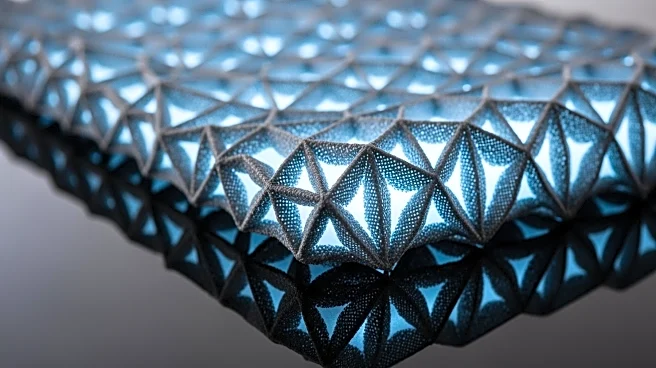What's Happening?
The fashion industry is undergoing a transformation with the integration of 3D technology into fabric construction. This advancement allows designers to create fabrics with intricate three-dimensional
structures, tailored functionality, and customized fit. Techniques such as 3D weaving, knitting, and printing enable the production of garments that adapt to movement, posture, and seasonal changes in body shape. The technology also facilitates the creation of innovative textures and patterns, combining functionality with aesthetic appeal. Additionally, 3D textiles can incorporate practical features directly into the fabric, offering performance benefits for sportswear and protective clothing. The technology supports sustainable fashion by enabling on-demand production, reducing fabric waste and carbon footprint.
Why It's Important?
The integration of 3D technology in fashion textiles represents a significant shift towards more sustainable and innovative garment production. By allowing for on-demand manufacturing, the technology reduces excess material waste and environmental strain, aligning with the industry's growing focus on sustainability. The ability to create customized garments enhances consumer satisfaction and reduces waste, as each piece is tailored to individual needs. The technology also opens new creative possibilities for designers, enabling the production of garments with complex structures and integrated functionality. As the fashion industry embraces these advancements, it could lead to a reduction in environmental impact and an expansion of creative horizons.
What's Next?
As 3D technology continues to evolve, it is likely to become more accessible to designers and consumers, facilitating mass customization and personalized garment production. The integration of smart textiles and wearable electronics into 3D-printed fabrics could further enhance the functionality of garments, offering features such as health monitoring and adaptive fashion. The ongoing development of sustainable materials compatible with 3D construction methods could revolutionize not only fashion apparel but also technical textiles used in various industries. As these technologies advance, the fashion industry may increasingly view them as strategic solutions to reduce environmental impact and respond to consumer demand for personalization.
Beyond the Headlines
The fusion of 3D technology with design and materials science is poised to transform the fashion industry, offering new opportunities for innovation and sustainability. The technology's potential to reduce waste and enhance customization aligns with broader cultural shifts towards environmental consciousness and personalized consumer experiences. As the industry continues to explore these advancements, it may lead to long-term changes in how garments are produced, marketed, and consumed.











